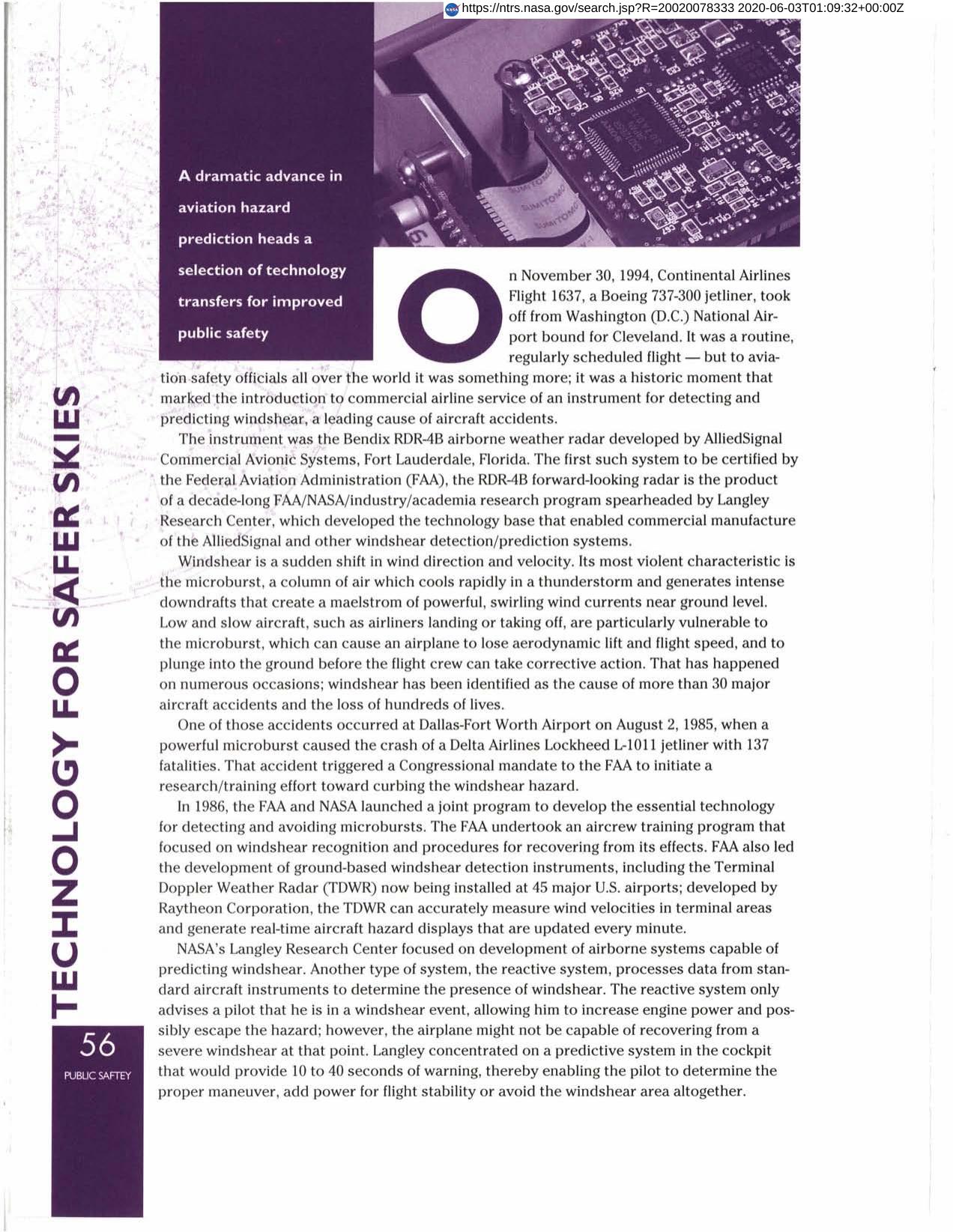
Technology for Safer Skies (WXR-700)
After a decade of cooperation and research by the Federal Aviation Administration (FAA), NASA, the aircraft industry and academia, Langley Research Center developed microburst sensors to detect and avoid windshear. Windshear, a sudden shift in wind direction and velocity, causes intense downdrafts and can plunge planes to the ground before pilots can react. A Congressional Mandate to the FAA launched the program, and Rockwell Collins Air Transport Division used the technology it developed under this program and a contract to NASA to produce its own algorithms. This research was incorporated into their WXR-700 weather radar to create the WXR-700WR, the forward-looking windshear radar. Collins initiated system deliveries in 1995.
Full article: http://hdl.handle.net/hdl:2060/20020078333

Technology for Safer Skies (WXR-700)

Technology for Safer Skies (WXR-700)













